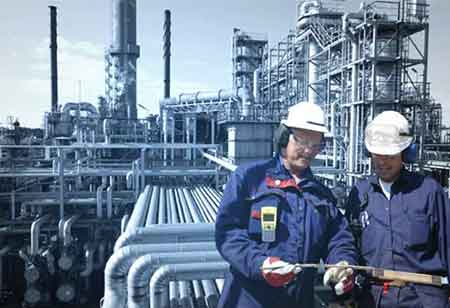Thank you for Subscribing to Energy Business Review Weekly Brief
Developing Robotics And Artificial Intelligence For Sustainable Agriculture
The food supply chain is facing a crisis. Population growth, labour

By
Energy Business Review | Saturday, December 03, 2022
Stay ahead of the industry with exclusive feature stories on the top companies, expert insights and the latest news delivered straight to your inbox. Subscribe today.
Automation and AI will help relieve the effects of an ageing agricultural workforce and a timid supply of field workers looking for less strenuous work.
The food supply chain is facing a crisis. Population growth, labour shortages,over-farming, and environmental abuse jeopardize one of our most basic needs.
Automation and AI will help relieve the effects of an ageing agricultural workforce and a timid supply of field workers looking for less arduous work. Self-driving agricultural machinery & autonomous drones mean farmers can take less time watching the path in front of them and more time centring on the path ahead to more sustainable harvests and profits.
In addition, data mining and predictive analytics will turn into common tools of the trade, allowing farmers to make better decisions, magnify resources and optimize yields.
Robots and machine learning facilitate new, more sustainable agricultural methods that take farming inside and to new heights to maintain resources, reduce chemicals and shorten the time to market. With more sustainable, fresher options from customary growers, greenhouses, and vertical farmers, the world's population should be possible to eat better, cleaner, smarter and more affordable.
Big Data for Better Crop
Data is one of the most treasured assets for farmers. Precision agriculture feeds on big data. For example, today's farmers can employ web-based tools to help them create prescriptions, or maps, of how much fertilizer to apply to specific areas of the field. That formula can then be sent to the sprayer and GPS as it drives through the field. The sprayer will automatically adapt the rate to ensure the right amount of fertilizer is applied to a specific area.
All of this data exchange needs a lot of computing power. As a result, Deere has not only had to transition from traditional agriculture to precision farming with advanced robotics and AI. But they have also transformed their knowledge base and resources to endorse internet of things (IoT) solutions, mobile apps and cloud services.
Farmers have heaps of trusted advisors. Whether they are agronomists that give expertise in the science of soil management and crop production, their bankers or seed reps, these advisors help farmers make their day-in, day-out decisions. The cloud allows data sharing and collaboration between farmers and their trusted advisors.
Precision agriculture is optimizing yields while controlling costs and encouraging and maintaining sustainability. That incorporates protecting the environment. Shield the land, the water and the air, and minimize waste. Using fewer pesticides, fertilizer, and other chemicals decreases fuel consumption, reduces carbon emissions, and conserves more natural resources and energy. Generations of Earth's future inhabitants will rely on it.
Autonomous Harvesting with Industrial Robots
A new startup is set on supporting growers to reach those sustainability goals. Root AI of Boston, Massachusetts, brings a special toolbox to the challenge.
Launched in 2018, Root AI uses traditional and proprietary robotics hardware combined with refined software to extend the domain where industrial robots add value. For example, agricultural robotics has typically involved bespoke equipment concentrated on a specific task or a specific type of crop. Root's solution puts a modular collective robot to work on the farm and makes it even smarter with AI.
Faster and Fresher to Market
If growers can choose it one day and have it on the grocery store shelf the next day, that's the apex of nutritional value and flavour. That's where consumer trends come into play. People want fresh products in their diets. But to deliver a fresh product that is consistently high in quality, nutritional value, and taste means growers are required to start producing closer to where food is used up. Presently, the logistics supply lines for fruits and vegetables are quite long and can eat into the product's shelf life, degrading the end customer's experience.
Working with greenhouse growers is a rare opportunity to be part of a very disruptive and positive change in agriculture. These facilities are hyperefficient. They can use up to 90% less water than a typical outdoor farm. They can minimize pesticides, fungicides and herbicides, and because these are controlled indoor environments, they use beneficial insects to attack the bad insects.
Check Out This: Top Logistics Tech Solutions Companies






